<< Previous | Displaying results 51-100 of 412 for "DEATH MARCH" | Next >>
Sophie was born to a prosperous Jewish family in a village near the Hungarian border known for its winemaking and carriage wheel industries. The village had many Jewish merchants. Her father owned a lumber yard. Sophie loved to dance in the large living room of their home as her older sister, Agnes, played the piano. 1933-39: Sophie's father believed in a Jewish homeland and sent money to Palestine to plant trees and establish settlements there. When she was 10, she was sent to a school in nearby Oradea…
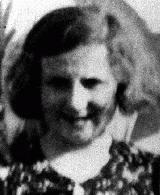
Magda was the only daughter in a family of five children. Her town of Michalovce, in eastern Slovakia, was an agricultural trade center and it had a large Jewish population. Magda's father taught Jewish history in local Jewish schools. Magda grew up learning Hebrew songs and listening to stories about Jewish history. 1933-39: It's Magda's nature to work with people and to help them work together. In Michalovce she studied to become a kindergarten teacher, and worked to establish a new chapter of the…

Nesse's family had a dairy business. The Germans occupied Lithuania in 1941 and established a ghetto in Siauliai. Nesse lived in the ghetto until 1943 when she was old enough to work. In 1944 Nesse, her mother, and a brother were deported to the Stutthof camp near Danzig. Nesse worked in several Stutthof subcamps until January 1945, when the inmates were put on a death march. She was liberated by the Soviets in March. Nesse, her mother, and two brothers survived, and she arrived in the United States in…
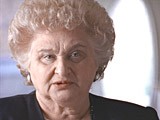
Charles Torluccio is a veteran of the 11th Armored Division. During the invasion of German-held Austria, in May 1945 the 11th Armored (the "Thunderbolt" division) overran two of the largest Nazi concentration camps in the country: Mauthausen and Gusen.

Wilek was the son of Jewish parents living in the southeastern Polish town of Lvov. His family owned and operated a winery that had been in family hands since 1870. Wilek's father died of a heart attack in 1929. Wilek entered secondary school in 1939. Soon after he began school, World War II began with the German invasion of Poland. Lvov was in the part of eastern Poland annexed by the Soviet Union. Although the Soviets took over Wilek's home and the family business, Wilek was able to continue his…
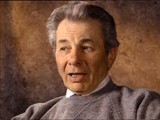
The charred corpse of a prisoner killed by the SS in a barn just outside of Gardelegen. The SS guards locked the prisoners, who were on a death march from the Dora-Mittelbau camp, in a barn, which was then set ablaze. Gardelegen, Germany, April 16, 1945. This image is among the commonly reproduced and distributed, and often extremely graphic, images of liberation. These photographs provided powerful documentation of the crimes of the Nazi era.
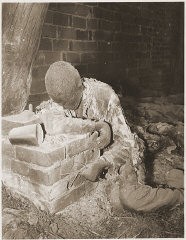
The bodies of Jewish women exhumed from a mass grave near Volary. The victims died at the end of a death march from Helmbrechts, a subcamp of Flossenbürg. Germans were forced to exhume them in order to give the victims proper burial. Volary, Czechoslovakia, May 11, 1945.
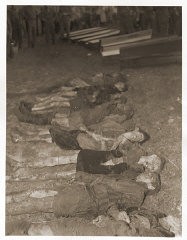
Under the supervision of American medics, German civilians file past the bodies of Jewish women exhumed from a mass grave in Volary. The victims died at the end of a death march from Helmbrechts, a subcamp of Flossenbürg. Germans were forced to exhume them in order to give the victims proper burial. Volary, Czechoslovakia, May 11, 1945.

A US soldier stands among the corpses of prisoners exhumed from a mass grave in a ravine near Nammering. On April 19, 1945, a freight train with nearly 4,500 prisoners from Buchenwald pulled onto the railroad siding at Nammering. Hundreds of prisoners who had died on the train were buried in the mass grave along with the prisoners who were forced to carry the corpses to the ravine and were then shot. Germany, ca. May 6, 1945.

Chaim was the third of seven boys born to religious Jewish parents. They lived in a town near Warsaw called Gabin, where Chaim's father worked as a cap maker. Gabin had one of Poland's oldest synagogues, built of wood in 1710. Like most of Gabin's Jews, Chaim's family lived close to the synagogue. The family of nine occupied a one-room apartment on the top floor of a three-story building. 1933-39: In September 1939, two months before Chaim was 12, Germany invaded Poland. In Gabin 10 people were shot in…
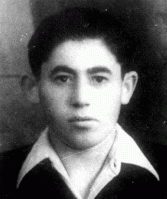
Yitzhak Balsam was just under 15 years old when Germany invaded Poland in September 1939. Like other Jewish men in Praszka, he was forced to build roads outside of town. Yitzhak was later deported to several camps, including Auschwitz, and was imp...
Meyer (Max) Rodriguez Garcia was born to a Jewish family in Amsterdam. Max was nearly 16 years old when Germany invaded the Netherlands in May 1940. He went into hiding in early 1943, but was caught by June and deported to Auschwitz in German-occu...
Born to a Jewish family in Preveza, Rena Gani was endangered by the German occupation of Greece. In March 1944, the Nazis deported the Jews of Preveza to Auschwitz. Rena was later sent to the Ravensbrück camp and was liberated during a death march...
Gross-Rosen became an independent concentration camp in 1941. The camp eventually expanded to become the center of an industrial complex and to include a vast network of at least 97 subcamps.
Eva Ostwalt was born in Cologne, Germany, to Jewish parents. She had two younger sisters, Kate and Trude. In 1927, Eva moved with her daughter, Heidemarie, and non-Jewish husband to Dresden. Eva and Karl later divorced, and Eva received custody of Heidemarie. Mother and daughter moved to Merano, Italy. When Eva’s passport expired in 1938, she had to return to Germany. Believing that Heidemarie would be safer with her father, Eva gave custody back to Karl in Dresden. Eva returned to Cologne, where both…
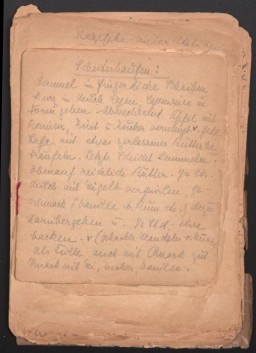
Eva Ostwalt was born in Cologne, Germany, to Jewish parents. She had two younger sisters, Kate and Trude. In 1927, Eva moved with her daughter, Heidemarie, and non-Jewish husband to Dresden. Eva and Karl later divorced, and Eva received custody of Heidemarie. Mother and daughter moved to Merano, Italy. When Eva’s passport expired in 1938, she had to return to Germany. Believing that Heidemarie would be safer with her father, Eva gave custody back to Karl in Dresden. Eva returned to Cologne, where both…
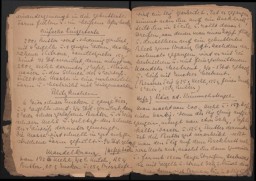
Eva Ostwalt was born in Cologne, Germany, to Jewish parents. She had two younger sisters, Kate and Trude. In 1927, Eva moved with her daughter, Heidemarie, and non-Jewish husband to Dresden. Eva and Karl later divorced, and Eva received custody of Heidemarie. Mother and daughter moved to Merano, Italy. When Eva’s passport expired in 1938, she had to return to Germany. Believing that Heidemarie would be safer with her father, Eva gave custody back to Karl in Dresden. Eva returned to Cologne, where both…
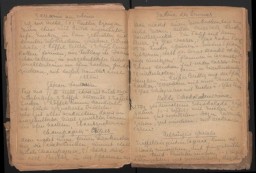
Fleeing the advance of the Soviet army, the Germans forcibly evacuated westward by barge these prisoners of the Stutthof concentration camp. Near Danzig, January 1945.
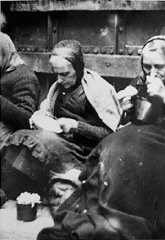
German civilians from Volary attend burial services for the Jewish women exhumed from a mass grave in the town. The victims died at the end of a death march from Helmbrechts, a subcamp of Flossenbürg. Germans were forced to exhume them in order to give the victims proper burial. Volary, Czechoslovakia, May 11, 1945.
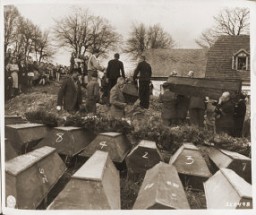
April 20-21, 1945. On this date, SS guards evacuated prisoners from the Sachsenausen concentration camp in Germany.

Stutthof began as a civilian internment camp under the Danzig police chief and then became a "labor education" camp under the German Security Police. In January 1942, Stutthof became a regular concentration camp. Stutthof prisoners were used as fo...
Prisoners of the Dachau concentration camp were subjected to horrific conditions, forced labor, and medical experiments. The camp was liberated by American forces on April 29, 1945.Here, Dachau survivors and US Army veterans share their tes...
Prisoners of the Dachau concentration camp were subjected to horrific conditions, forced labor, and medical experiments. The camp was liberated by American forces on April 29, 1945. Here, Dachau surviviors and US Army veterans share th...
Photograph showing Helene Reik's family members and friends gathered in March 1941 in Brazil. After her deportation to the Theresienstadt ghetto in Czechoslovakia, Helene yearned to record what was happening to her. This photograph was sent to Helene, who used it as paper for her diary in Theresienstadt. Helene’s makeshift diary offers wistful memories of her husband and parents who died before the war, loving thoughts of her family who had left Europe in 1939, and a firsthand account of the illness…

Dachau was the first and longest operating Nazi concentration camp. Learn about the camp's early years, prisoners, medical experiments, and liberation.
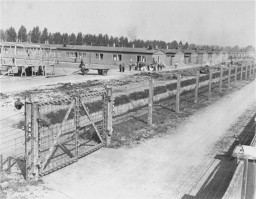
Ravensbrück was the largest concentration camp for women in the German Reich. Learn about the last months of the Ravensbrück camp and the postwar trials of camp staff.
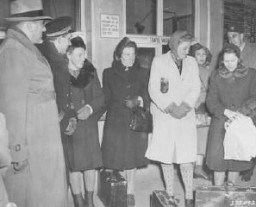
At the Berga-Elster subcamp of Buchenwald, prisoners were forced to do dangerous and brutal work in tunnels to support fuel production for the German war effort.
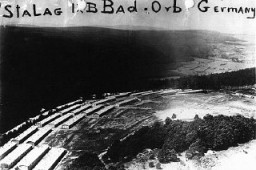
The 4th Armored Division participated in major WWII campaigns and is recognized for liberating the Ohrdruf subcamp of Buchenwald in 1945.
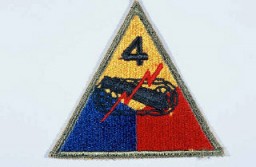
Nazi Germany occupied Hungary in March 1944. Learn about the experiences and fate of Jews in Budapest, Hungary's capital, before and after the occupation.

Now a national memorial site, the Ardeatine Caves outside Rome were the site of a German reprisal for a bombing by Italian resistance operatives in March 1944.
Explore a timeline of the history of the Ravensbrück camp in the Nazi camp system from its establishment in 1938 until the last of the Ravensbrück trials in 1966.
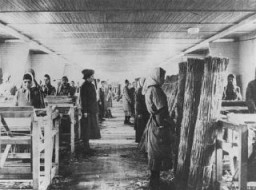
The 90th Infantry Division participated in major WWII campaigns and is recognized for liberating the Flossenbürg concentration camp in 1945.
The Hadamar Trial of October 1945 was the first mass atrocity trial held in the US occupation zone of Germany following World War II.
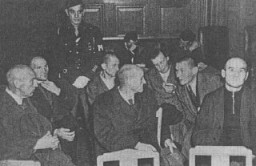
The 6th Armored Division participated in major WWII campaigns and is recognized for liberating the Buchenwald concentration camp in 1945.
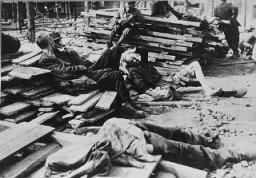
The 104th Infantry Division participated in major WWII campaigns and is recognized for liberating the Dora-Mittelbau concentration camp in 1945.
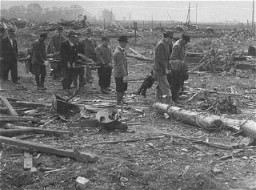
Learn about the role of Theresienstadt in the deportation of German and Austrian Jews to killing sites and killing centers in the east.

The Nazi regime's extensive camp system included concentration camps, forced-labor camps, prisoner-of-war camps, transit camps, and killing centers.
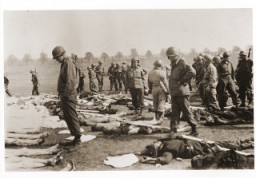
At its height, the Warsaw ghetto held over 400,000 people living in horrendous and worsening conditions. Learn about deportations both to and from the ghetto.
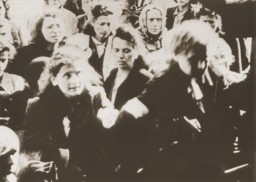
April 29, 1945. On this date, US Army divisions liberated approximately 32,000 prisoners at the Dachau concentration camp.
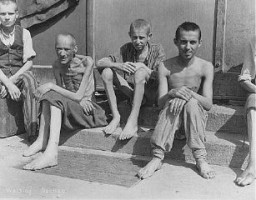
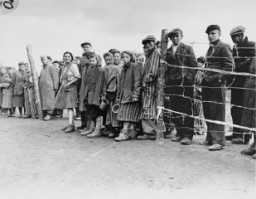
The 63rd Infantry Division participated in major WWII campaigns and is recognized for liberating several of the Kaufering subcamps of Dachau in 1945.
The 71st Infantry Division participated in major WWII campaigns and is recognized for liberating the Gunskirchen subcamp of Mauthausen in 1945.
Read a detailed timeline of the Holocaust and World War II. Learn about key dates and events from 1933-45 as Nazi antisemitic policies became more radical.
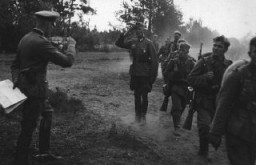
The 4th Infantry Division participated in major WWII campaigns and is recognized for liberating the Haunstetten subcamp of Dachau.
The 12th Armored Division participated in major WWII campaigns and is recognized for liberating a subcamp of Dachau in 1945.
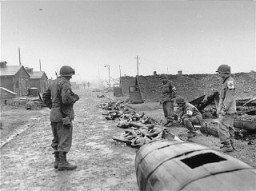
The 8th Armored Division participated in major WWII campaigns and is recognized for liberating the Halberstadt-Zwieberge subcamp of Buchenwald in 1945.
We would like to thank Crown Family Philanthropies, Abe and Ida Cooper Foundation, the Claims Conference, EVZ, and BMF for supporting the ongoing work to create content and resources for the Holocaust Encyclopedia. View the list of donor acknowledgement.